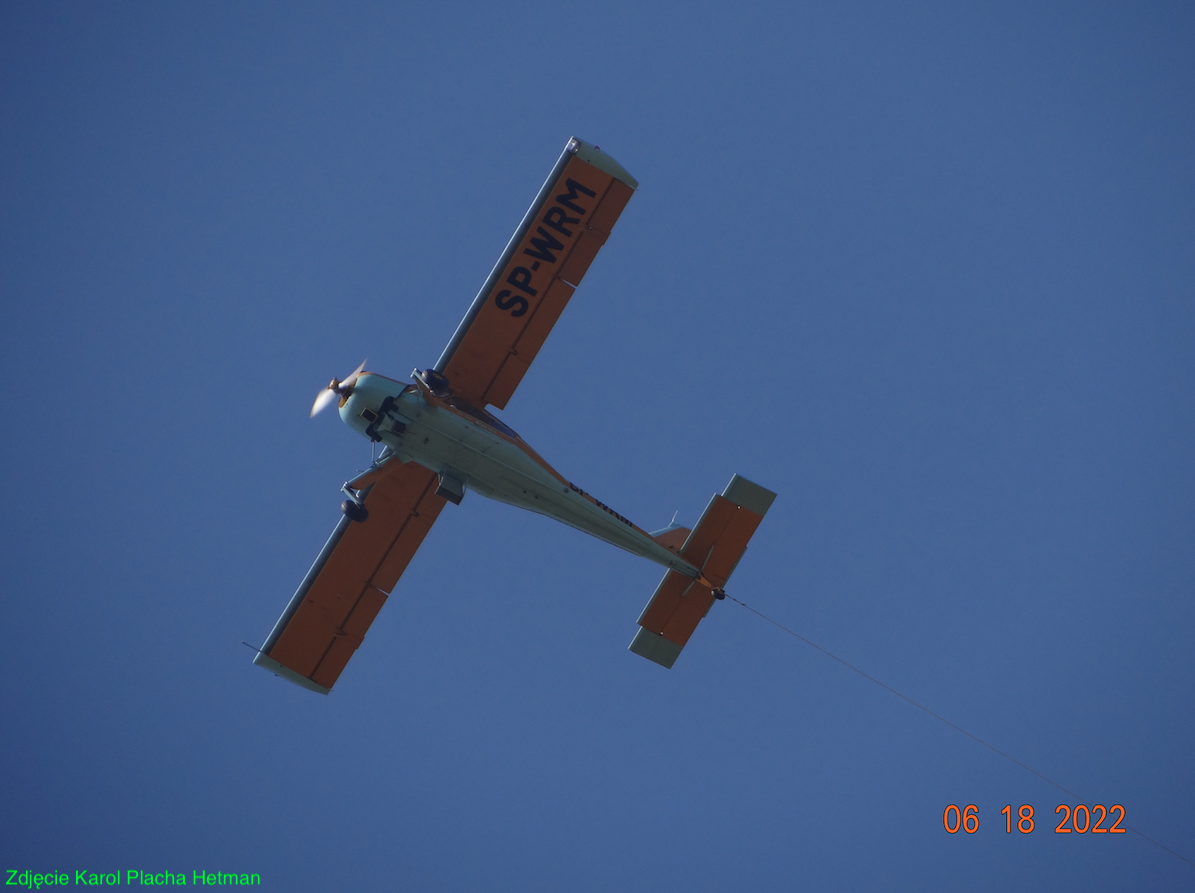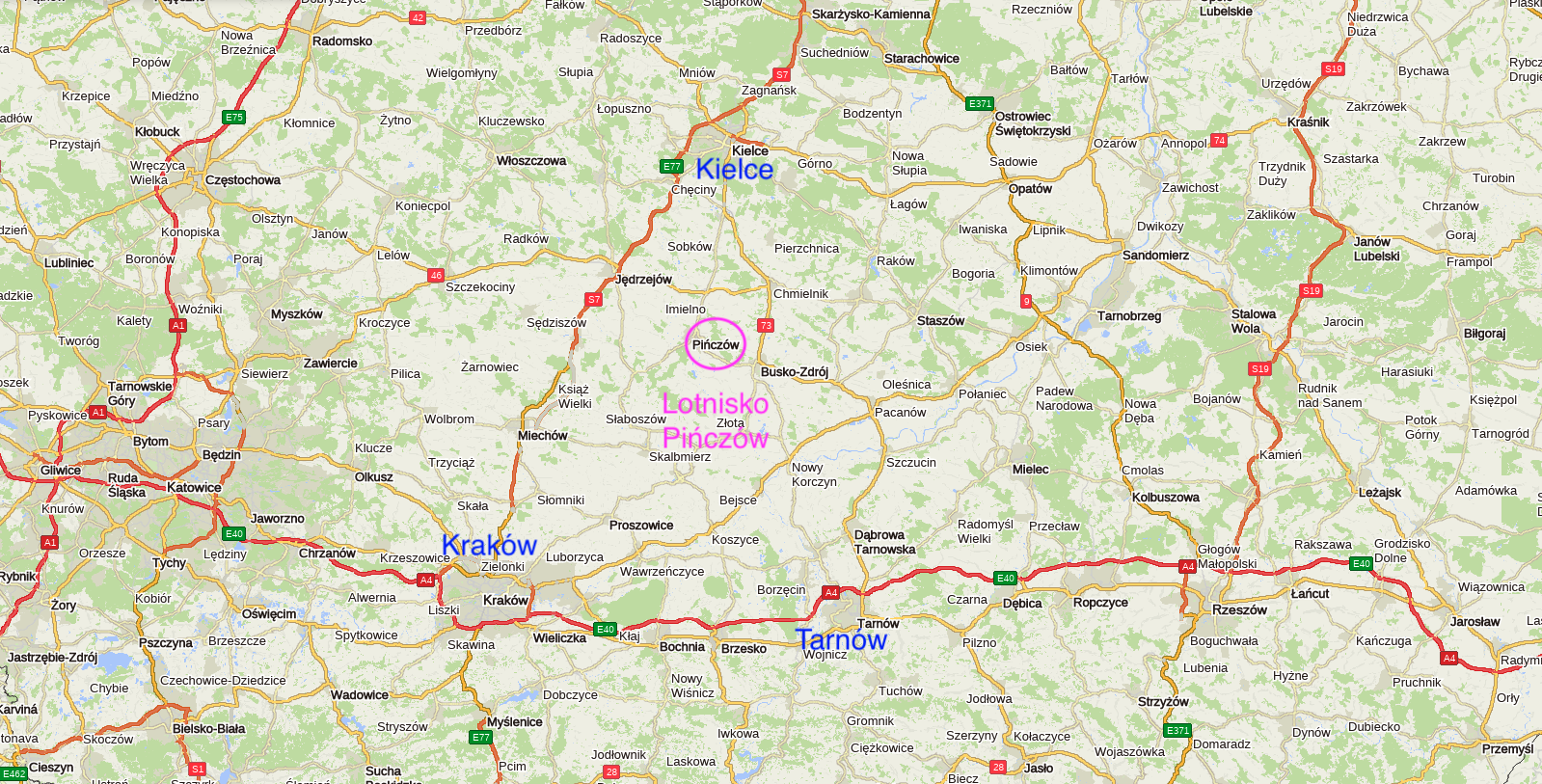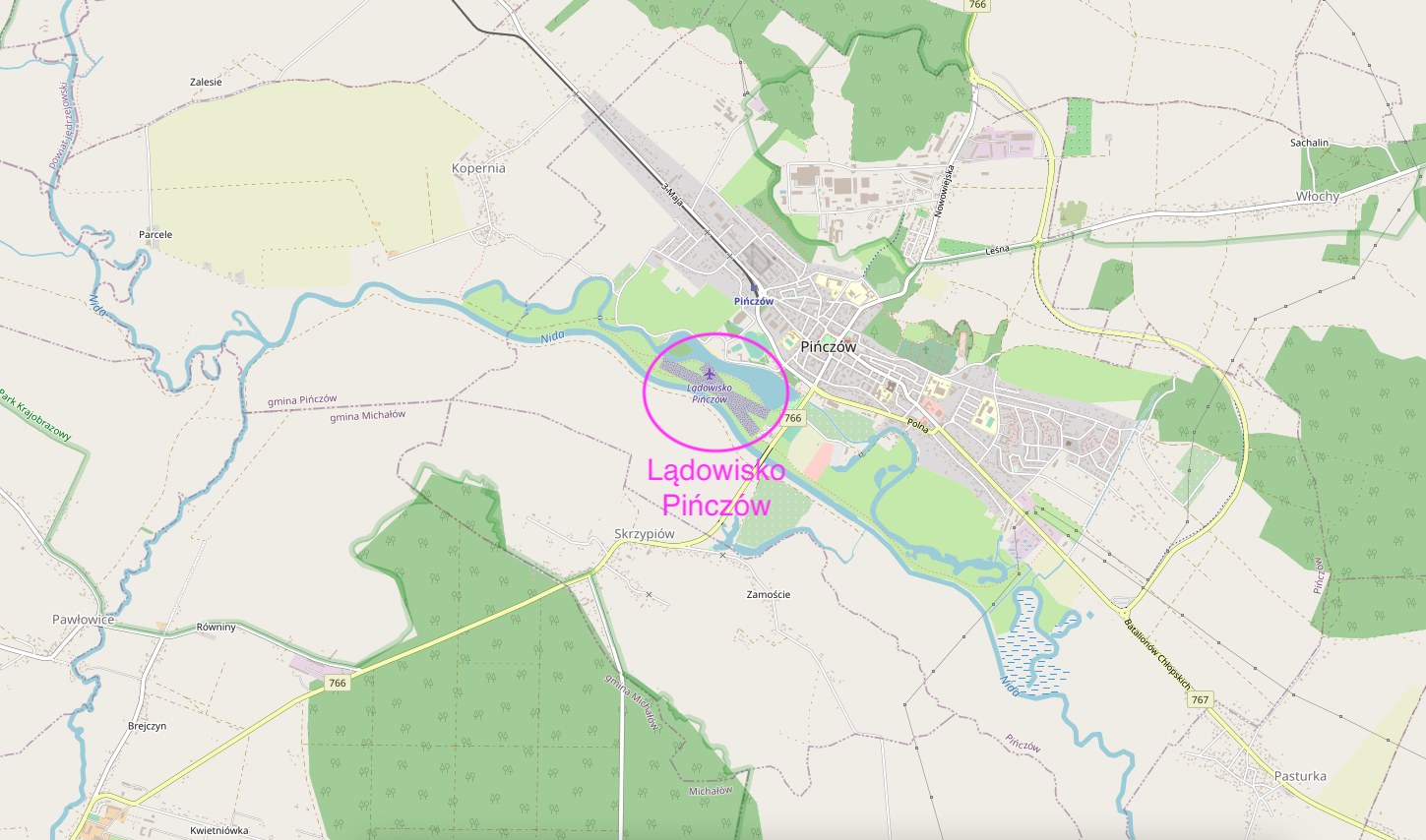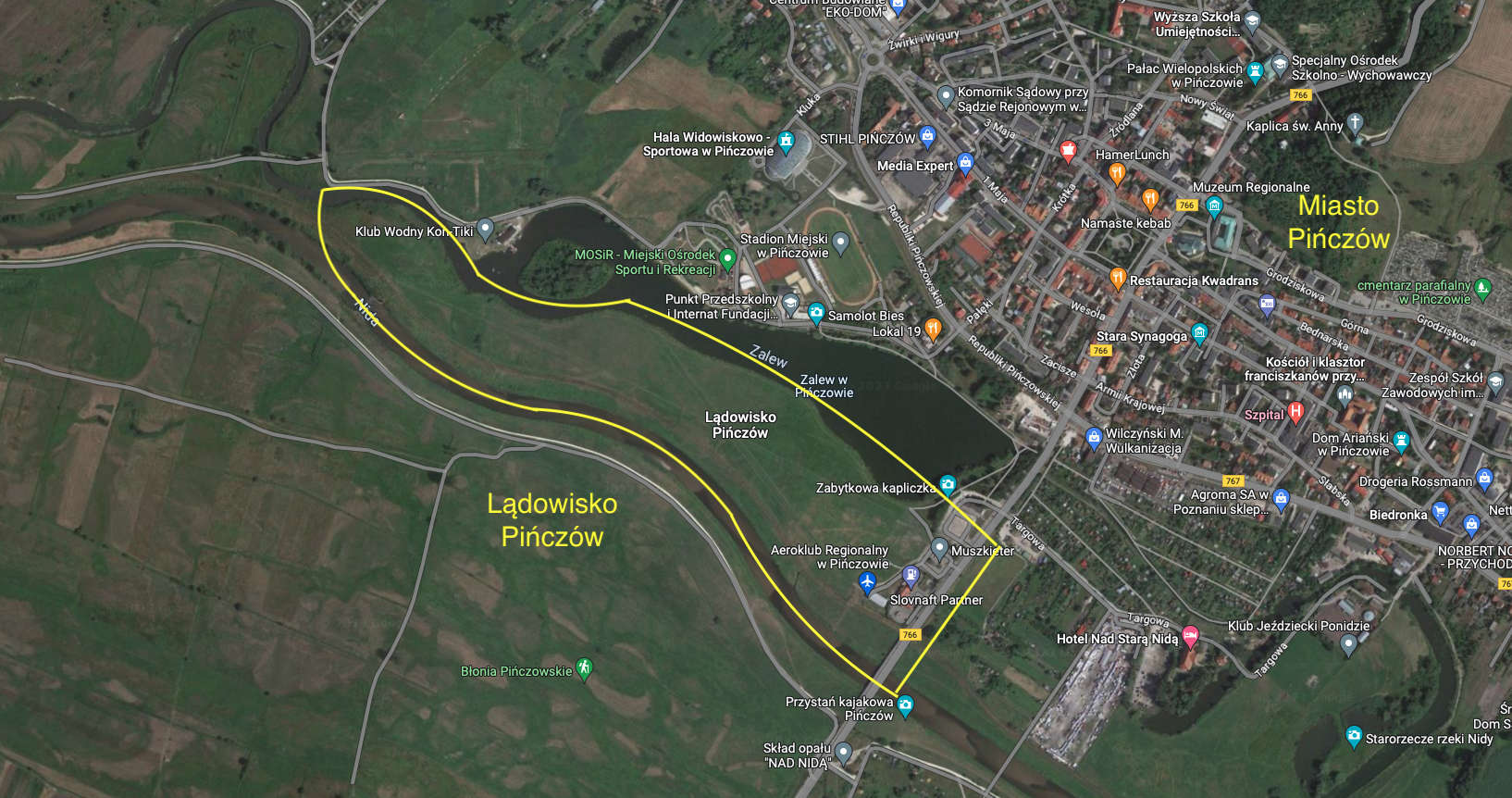Pińczów 2023-02-14
Pinczow sports airport.
Geographic coordinates: 50.517N 20.517E. Elevation 186 m (610 ft).
The city of Pińczów.
Pińczów is a town in Poland in the Świętokrzyskie Voivodship, the seat of the Pińczów poviat and the urban-rural commune of Pińczów. Pińczów was a private noble town, founded in 1428. The population of the city in 2018 was 10,946 inhabitants. The distance from Pińczów is to: Busko Zdrój – 16 km. Wislica – 25 km. Kielce – 40 km. Krakow – 80 km. Sandomierz – 100 km. Czestochowa – 116 km. Warsaw – 220 km. The provincial road No. 766 from Morawica to Węchadłów runs through the town. The provincial road No. 767 leading to Busko-Zdrój starts here.
Geographically, Pińczów is located south of the Świętokrzyskie Mountains, in the Nadnidziański Landscape Park. From the north, the city rests on the slopes of the hills that are part of Garb Pińczowski. From many places there are vast panoramas, showing the space completely filled with the Nadnidziański Landscape Park. Pińczów is situated on the banks of the Nida river flowing among vast meadows to the Vistula River. There are many sacral architectural monuments in the area, among them the monastery complexes of the Pauline Fathers and the Reformati. The first traces of settlement are centuries before Christ. Pińczów was bypassed by the main trade routes, which is why a specific culture and harmony of man with nature and history have developed here. The Świętokrzyski Literary Trail runs through the village.
The development of the settlement began in the 12th century, when a quarry extracting limestone – Pińczów – was opened here. To protect the miners, a stronghold was built, and then a castle. The final name of the settlement was formed in the mid-15th century. There is no information about the first owners, but later the property belonged to the Oleśnicki family. The Oleśnicki family brought the Pauline Order to the settlement. King Władysław Jagiełło granted town rights to the settlement in 1428. The town was granted the right to organize weekly and annual fairs on church holidays. The inhabitants were engaged in agriculture, viticulture, cattle and sheep breeding. In the 16th century, the city was a strong center of the Reformation (Calvinists, Arians). The Pauline Order was expelled from the city, and the buildings were converted into a Pińczów gymnasium, and then a Sarmatian gymnasium. The printing house was launched. In Pińczów, in the period 1556 – 1563, the scientific community made a full translation of the Bible into Polish. It was the second in history, after Leopolitus’ Catholic Bible, but the first because of a direct translation from the original texts; the Old Testament in Aramaic and Hebrew, and the New Testament in Greek. In Pińczów, the Reformation ended in 1586, when the bishop of Kraków, Piotr Myszkowski, bought the town. The Pauline Fathers returned to the city, and the junior high school in Pińczów adopted the program of the Polish parish school. The Myszkowski family adopted the Gonzaga coat of arms and surname. In 1601, the Myszkowski family obtained permission from the Sejm of the Republic of Poland to create the Family Code. At the beginning of the 17th century, the castle was rebuilt and the chapel of St. Anna. In the 17th century, many foreigners settled in Pińczów. Most of the newcomers came from Italy, who opened stonemason’s workshops using the Pińczów stone quarried in the area. Scots, French, Germans and Jews also came. During the Swedish Deluge, the Swedish king Charles XII arranged his quarters in the castle. Military action during the Kościuszko Uprising caused the fall of the city. After the Third Partition of Poland, Pińczów found itself in the Austrian partition, and after the Congress of Vienna in 1815, in the Russian partition. In the 18th century, the Wielopolski Palace was built. The food industry developed in Pińczów; cheeses were produced. In the 19th century, Rosenberg’s cloth factory, a cotton factory and a dye house were established.
In Pińczów, there is the Pińczów Wąski railway station, which is part of the Świętokrzyska Kolej Dojazdowa.
Pińczów sports airstrip.
The airport in Pińczów was established in 1932 as part of the Aviation and Anti-Gas Defense League. The Air and Anti-Gas Defense League (LOPP) was a mass Polish paramilitary organization established in 1928 as a result of the merger of the State Air Defense League founded in 1923 and the Anti-gas Defense Society founded in 1922. The league was intended to promote sport, communication and military aviation. The organization operated until the outbreak of World War II in 1939. In Pińczów, in 1932, the Glider School was founded.
But Pińczów has a longer aviation tradition. In 1784, "Gazeta Warszawska" reported the following: "…during the celebrations related to the beginning of the school year, two balloons with a diameter of two feet were released in Pińczów. In the autumn of that year, people also entertained themselves with constructing and releasing balloons at the estate of Margrave Franciszek Wielopolski."
In 1973, the airport for air sports was reopened in Pińczów. However, due to the lack of adequate funds, the Aeroclub could not be created. At the beginning of the 1990s, a branch of the Kielce Aeroclub was established in Pińczów for the training of glider pilots. Theoretical training was conducted at the Municipal Sports and Recreation Centre. Pińczów Aeroclub was founded in January 1994, which was one of the few focused on motor hang gliding.
The Pińczów Aeroclub has been organizing the Polish PPG (Powered Paraglider) championships, precision flying competitions and modeling competitions for several years. The training at the Pińczów Aeroclub is carried out by a certified paragliding school, SLR "AEROKRAK". Paragliding and hang gliding training for all stages are conducted, as well as training for additional qualifications such as powered flights (PPG), powered paragliders (PPGG), winch training, for managers start and winch operators.
The Pińczów airstrip has the ICAO code – EPPC. The helipad belongs to the Regional Aeroclub in Pińczów. The helipad is approved for air operations by motor gliders, airplanes, gyroplanes, towed flights with a motor glider or ULM, and towed flights with a stationary winch. Radio communication – Pińczów Radio – 122.600 MHz.
The helipad has two RWYs. The first RWY 700 m x 30 m, direction 115/295, ground surface – grass. The second RWY 550 m x 20 m, direction 142/322, ground surface – grass. There is a hangar at the airport where aircraft can be hangared.
The airport is used by the Polish Medical Air Rescue (LPR). There is a hardened heliport for helicopters with access for ambulances from a nearby hospital. The heliport has the shape of a circle with a diameter of 15 m. The surface is asphalt. The helipad was equipped with approach lights in direction 035/215. Landing at night is carried out with the assistance of the fire brigade.
Landing address; Regional Aeroclub in Pińczów, ul. Legionowców 26A, 28-400 Pińczów, Tel. +48 668 409 128.
Written by Karol Placha Hetman




